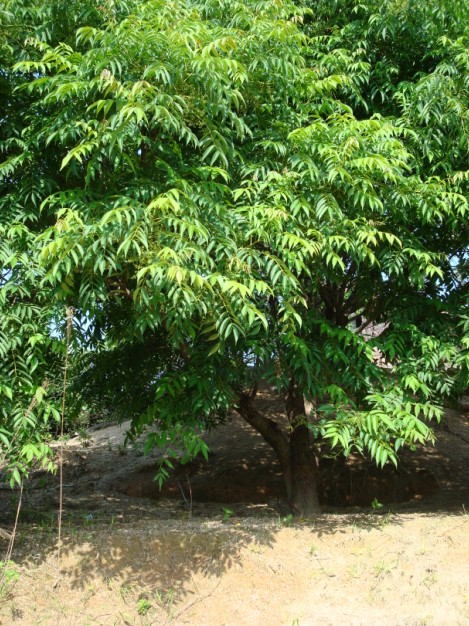Toxicodendron vernicifluum Seed
A caustic, toxic sap, called urishiol, is tapped from the trunk of the chinese lacquer tree to produce lacquer. This is done by cutting 5 to 10 horizontal lines on the trunk of a 10 year old tree, and then collecting the greyish yellow sap that exudes. The sap is then filtered, heat-treated, or coloured before applying onto a base material that is to be lacquered. Curing the applied sap requires "drying" it in a warm, humid chamber or closet for 12 to 24 hours where the urushiol polymerizes to form a clear, hard, and waterproof surface. In its liquid state, urushiol can cause extreme rashes, even from vapours. Once hardened, reactions are possible but less common.
Products coated with lacquer are recognizable by an extremely durable and glossy finish. Lacquer has many uses; some common applications include tableware, musical instruments, fountain pens, jewelry, and bows. There are various types of lacquerware. The cinnabar-red is highly regarded. Unpigmented lacquer is dark brown but the most common colors of urushiol finishes are black and red, from powdered pigments of iron and ferric oxide, respectively. Lacquer is painted on with a brush and is cured in a warm and humid environment.
Artistic application and decoration of lacquer can be a long process, requiring many hours or days of careful and repetitive layers and drying times. The creation of a single piece of urushi art, such as a bowl or a fountain pen, may take weeks to months to complete. Lacquer is a very strong adhesive.
The leaves, seeds, and the resin of the Chinese lacquer tree are sometimes used in Chinese medicine for the treatment of internal parasites and for stopping bleeding. Compounds butein and sulfuretin are antioxidants, and have inhibitory effects on aldose reductase and advanced glycation processes

